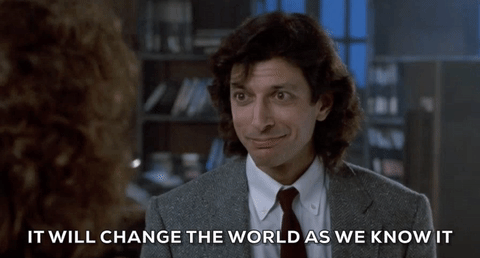Search powered by Funnelback
As the fiscal year wraps up, we’ve noticed big changes in 2018 -- and it’s far from over.
Here’s what we’re hearing from experts in the industry about what’s to come in the next year.
Giving is growing in some unexpected new ways
In this time of political unrest, charitable giving is expected to grow by 3.8% YoY according to NLE. The public feels a desire to make the world a better place, and they’re giving their dollars where there will be a measurable impact.
Giving has also become largely peer-driven and highly shareable. Research shows that seeing others give makes a prospective donor more likely to give. At its core, giving is a social act (and has been shown to be a healthy habit to adopt).
Donation channels are changing, partly in response to their increasingly social nature. There’s more online and mobile giving than ever before, and crowdfunding sites like GoFundMe, Kickstarter, and Indiegogo have seen rapid growth as a result. GoFundMe expects $40 billion USD to be raised via their platform in the next decade.
We have seen indications that crowdfunding campaigns are the most successful when linked to an individual person or family in a specific time of need and not, to the disappointment of many nonprofits, when linked to ongoing campaigns for a cause. This poses a threat and an opportunity to more established organizations as new generations solidify their giving habits.

Online everything
As the next generation of tech-savvy donors are coming onto the scene, organizations will be called upon to prove their value to their donors.
In the early 2010s, nonprofits mastered compelling storytelling. Now that story needs to be taken fully into the digital realm. Short, intentional multimedia vignettes and highly-shareable stories extend your nonprofit’s reach to new audiences of advocates and donors. Truly digital stories, told in unique and compelling ways, stand out above the rest and have buzz-worthy potential.
The modern organization is also under pressure to tell stories in real time. These in-the-moment updates produce a powerful impact: your story, your team, or your cause can meet donors where they already spend time online, whether in Twitter, Snapchat or similar apps. By embracing real time stories that show the direct impact of a donation, your organization is far more prepared to compete in a digital dominated landscape.
Do something with your data
Your organization has a wealth of data. Probably spread out over a few databases. Here’s the question you’ve probably seen coming for years. Maybe you even dreaded it a little.
Is your data actionable?
Donors want to know.
The challenge for this year is aggregating and translating information into valuable insights where and when you need it. Many organizations have data siloed across many departments in multiple content libraries. Without a single source of truth, it’s likely that your employees, donors and even beneficiaries often find themselves on a wild goose chase looking for answers. Enterprise reporting tools that consolidate multiple data sources into a single source of truth are essential for a modern organization.
Business intelligence will help organizations comply with regulations while collecting, organizing and analyzing data. For outreach efforts, predictive analytics prove handy to identify those most likely to give, prioritizing high-touch personal outreach and maximizing returns.
Organizations like Charity:water are already using their data to prove value to donors and help provide operational efficiency. Donors, partners and staff can track projects to completion with their web-enabled tools.
Investing in data-driven tech that has a measurable ROI will help you understand who is engaging with products and services and how they are engaging.

Getting personal
You’ve heard it before: take care of your donors. Now, the trend to watch is leveraging technology to drive engagement, personalization and value for every stakeholder that touches your organization. According to NLE, constituent relationship management (CRM) tools like Salesforce help to humanize your organization, a key factor in donor engagement and fundraising effectiveness.
A first name on an email isn’t enough, though. Nonprofits must utilize personalization and CRM data across multiple channels and methods.
Follow the lead of Amazon, Uber, and Netflix: understand your donor’s passions and interests, and help them fulfill them. In the nonprofit world, this might include segmenting audiences by specific interests: likely Gala vs. 5K attendees, for example, or a customized series of updates detailing exactly what will be accomplished with their donation.
Philanthropy Journal News reports that the majority of givers would donate 10% more if fundraisers could be more explicit about where their money is going. Many nonprofits are starting to leverage AI, search and voice capabilities to detail their work and personalize their marketing efforts. A few are even digging into the emerging blockchain space, utilizing tools like Alice.si. Watch this space: we expect to see nonprofit technology and validation methods grow and be refined over the coming year.
Organizational development
Behind every successful business is its people. More than technology, process or location, your people remain central to success. Despite ever-present budget challenges, nonprofits are realizing the value of positions like Chief Culture Officer, Data Scientist and UX designer in their midst, according to Fast Company. Demand for these positions will continue to grow.
Like it or not, 21st century leadership has a responsibility to uphold the reputation of the organization in their personal lives. They are expected to reflect values consistent with the mission of the organization they lead. In the age of social media, leadership is expected to have a presence and voice on issues surrounding their organization. A well-managed, on-brand leadership team builds a sense of transparency and trust. Poor behavior, in contrast, reflects back directly onto the organization in the other direction.

Who can handle that kind of pressure? Not many, according to Concord Leadership Group. This is a tremendous challenge for the next generation of leadership. Engaged, satisfied and well-coached or mentored employees, promoted internally, are often your best bet. Future-proof your organization to attract and retain top talent and avoid employee burnout.



